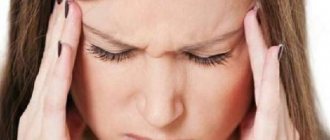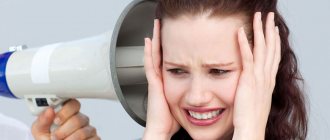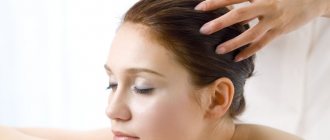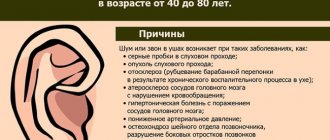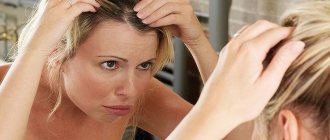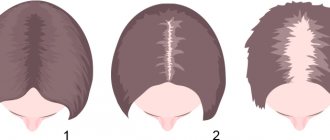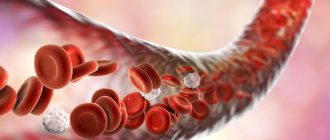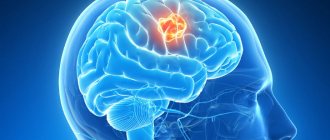Causes of pain
A headache that spreads to the skin at the roots of the hair is a characteristic sign of fungal, bacterial, metabolic diseases, as well as an allergic reaction to external irritants. Some people have highly sensitive skin, so they are more susceptible to such manifestations. Diagnostic results may reveal disorders that require an individual treatment regimen.
Skin diseases
Pain that intensifies when you touch the scalp is a typical symptom of skin diseases. They can be triggered by a fungal or bacterial infection, metabolic disorders and other factors. Most diseases present with similar symptoms. The patient presents with problems such as itching in the scalp, redness of the skin, the appearance of microdamages and rashes. It is possible to determine what caused these symptoms only based on test results.
Psoriasis
Psoriasis is a chronic disease of autoimmune origin. Its main cause is a disruption of the immune system, which leads to the appearance of inflammatory lesions on the skin. The disease can manifest itself on any part of the body, including the head. Its characteristic symptoms:
- the appearance of voluminous spots that connect with each other and form plaques;
- itching, inflammation of the skin;
- relapsing course, with alternating periods of remission and relapses;
- in some cases - joint damage.
The disease can occur with varying degrees of severity, even in one patient. Relapses are often triggered by changes in weather conditions, stress, disruption of the daily routine and concomitant diseases. It is important that psoriasis is not transmitted through household, contact, or airborne transmission.
Seborrheic dermatitis
Seborrhea is a skin disease that is characterized by scaling, inflammation, flaking, itching and pain. The scalp is a typical location because there are a large number of sebaceous glands. Seborrheic dermatitis often occurs in children and adolescents, as well as in older adults. Its appearance is associated with disruption of the skin glands, diseases of the immune system, as well as with the vital processes of a fungal infection.
Seborrheic dermatitis of the scalp occurs more often in those with oily skin. To reduce its manifestations, it is recommended to choose suitable care products, normalize your diet and sleep schedule. Your doctor may also prescribe antifungal medications if seborrhea is caused by an increased activity of a fungal infection.
Violation of innervation and blood circulation
If your scalp often hurts, itching and discomfort appear, you should consult a neurologist. This symptom may be associated with the high sensitivity of nerve endings located in the scalp area. Discomfort increases when touching the skin, combing the hair and while caring for it. Doctors recommend massage and, if necessary, sedatives based on herbal extracts.
Poor blood circulation in the scalp can be caused by mechanical factors. The blood vessels are compressed if you wear hats that do not fit properly, or use bulky hairpins. Lovers of high hairstyles and ponytails also often complain of pain and increased sensitivity of the skin at the end of the day.
Other reasons
Painful sensations are not normal. If your skin hurts, develops a rash, or has other alarming symptoms, it is important to see a doctor and get tested. Tests can show different diseases that occur with similar symptoms.
- Pediculosis is a disease caused by lice and nits. Infection occurs through contact and household routes and is possible even among those people who carefully monitor hygiene. To get rid of pests, pharmacies offer a wide range of shampoos and medicinal products against lice. They do not harm the hair and scalp and are suitable for use in adults and children.
- Fungal infection is a common cause of itching and soreness. The pathogen is found on the skin of most people, but is activated only under favorable conditions. The fungus reproduces at high temperatures and humidity, with limited access to oxygen. If it appears on the scalp, you need to use antifungal ointment and choose hats only from natural materials.
- Atopic dermatitis is a disease that is more common in children and goes away with age. Its exact cause has not been established, but exacerbation is associated with poor diet, stressful situations, and hormonal disorders. The patient’s condition is corrected through proper nutrition, scalp hygiene and selection of an appropriate set of care products.
- Allergic reactions - can occur when using various shampoos, soaps, balms and other hair and scalp care products. Within a few hours after the procedure, pain, itching and discomfort appear. It is important to choose skincare products that do not cause allergies, and if your health suddenly worsens, take an antihistamine and consult a doctor.
Some people have very sensitive scalps. They experience pain when combing or braiding their hair or wearing hats. This can lead to intense headaches and the development of chronic migraines. It is important to determine the cause of pain and take timely measures to reduce discomfort.
Causes of pathology
It is no coincidence that hair is called an indicator of a person’s overall health. If they fall out, split, break, or don’t shine, the reasons may be hidden inside the body. The same applies to uncomfortable sensations in the follicles of curls. Sometimes this is a symptom of such ailments:
- vegetative-vascular dystonia;
- other diseases accompanied by circulatory disorders associated with vascular spasms. Even sinusitis impedes blood circulation;
- furunculosis;
- migraine;
- dermatological diseases - psoriasis, seborrhea, etc.;
- exacerbation of herpes;
- pinched nerve.
It is important to exclude other dysfunctions of the body that provoke pain in the hair roots:
- changes in hormonal levels (pregnancy, menopause, other reasons). It is a frequent “culprit” of deterioration of hair condition;
- stress - a person is in constant tension, which causes the feeling of a helmet on the head;
- deficiency of vitamins, minerals;
- overwork, exhaustion. Often an additional symptom of this condition is numbness in the tips of the fingers and toes.
However, even a healthy person can have pain at the roots of their strands. Most often this happens due to:
- abrasions, wounds in a certain area (on the back of the head, on the top of the head);
- burns due to inaccurate dyeing, curling of hair or using a curling iron in the root zone;
- changing the parting. Hair gets used to the same position, so at first it may hurt;
- tight styling - a high ponytail or bun usually causes unpleasant symptoms in the crown area. For some women, pain occurs due to regular wearing of such a hairstyle, for others it is possible even after the first styling (for example, if the primary source of the problem is circulatory disorders or other ailments);
- dry scalp and dandruff;
- extension of curls - pressure on the follicles increases;
- allergic reaction to shampoo or other cosmetics;
- a bad comb, the teeth of which injure the epidermis;
- prolonged exposure to cold, which provokes vasoconstriction. This can cause pain in the root zone;
- piles of hairpins, hairpins, heavy accessories in the hair;
- wearing a small, ill-fitting, or tight headdress.
Some women note that most often the roots of their dirty hair hurt. Excess sebum in itself does not cause pain, so the following theses can explain the reason:
- Wanting to disguise not too clean strands, girls do not let them down, but collect them in a ponytail. This hairstyle can disrupt normal blood circulation in the root zone.
- Oily, contaminated skin is a place for the development of pathogenic microflora. If there are microcracks or damage on the skin, this is fraught with dermatological ailments, as a result of which the hair follicles begin to hurt.
Diagnostic and treatment methods
It is impossible to treat scalp pain at home. This symptom can be caused by various factors that require an individual approach to treatment. The doctor examines skin scrapings and hair follicles under a microscope; general and biochemical blood tests may also be needed. Based on the examination and laboratory results, a treatment regimen is prescribed. It may include the following steps:
- antifungal ointments and tablets;
- anti-inflammatory drugs;
- preparations against lice and nits, as well as other pathogens of dermatitis;
- proper nutrition - you should choose healthy foods with plenty of vitamins, avoid fatty foods, excess salt and spices;
- refusal of any products that cause allergies and irritation of the skin at the hair roots.
The Clinical Brain Institute has all the conditions for comfortable diagnosis and treatment of pain in the scalp. The effectiveness of treatment depends on the correctness of the diagnosis - for this purpose, our center has high-quality, modern equipment. Experienced doctors will select a set of drugs and procedures that will help get rid of pain and discomfort.
Preventive measures
To prevent the appearance of painful sensations in the scalp, you should take care of its cleanliness and carefully select hair and skin care products . Choose your headwear responsibly – it should not be tight or too loose. In the cold season, you should not allow hypothermia.
To avoid infection with infectious skin diseases of the scalp, you should avoid close contact with people - in public places, transport, etc., avoid using other people's combs or trying on other people's hats. Avoid injuries and scratches to the scalp, and if they appear, treat them with a skin antiseptic solution.
An important point in the prevention of skin diseases is proper nutrition and immune support . The infection affects the skin when the immune system is weakened and cannot fight bacteria and fungi.
Prevention methods
Some reasons why the scalp hurts are associated with heredity and chronic diseases, but others are acquired. Their occurrence can be prevented by following simple recommendations from doctors:
- watch your diet, give up fast food, fatty foods and sweets;
- choose quality shampoos and other cosmetics;
- use a comb with soft teeth that do not injure the scalp;
- do not tie your hair in tight hairstyles;
- avoid stress, if necessary, select herbal-based sedatives;
- normalize your sleep, work and rest schedule.
The Clinical Brain Institute specializes in the diagnosis and treatment of headaches and scalp soreness. The doctors of our center are experienced specialists in a narrow and broad profile. They will determine the reason why your scalp hurts and prescribe effective treatment. However, it is important for the patient to take responsibility for his own health: consult a doctor on time, and then take the prescribed medications as scheduled.
Clinical Brain Institute Rating: 3/5 — 7 votes
Share article on social networks
Diseases of internal organs as triggers of hair loss
Hair loss is a symptom, not an independent disease.
A number of diseases affect the deterioration of the appearance and health of women's hair. These include endocrine pathologies, gastrointestinal diseases, autoimmune processes, and infections.
If you notice any symptoms in conjunction with hair loss, you should consult an appropriate doctor. With different pathologies, hair falls out in different ways - we will talk about this below - depending on the nature of the loss, a preliminary diagnosis can be made. First of all, contact a specialized specialist (endocrinologist, gynecologist-endocrinologist, gastroenterologist), who will make a diagnosis and prescribe treatment.
When the cause is found and treatment has begun, you can make an appointment with a trichologist, and he, in turn, will prescribe products and procedures to promote rapid hair restoration.
What you should not do: solve the problem of hair loss as an independent disease and deal only with the cosmetic side of the issue.
Prevention and care of the scalp
To avoid problems with the condition of the scalp, you should follow simple rules:
- Avoid excessive use of styling products. Applying hairspray or gel to the hair shaft creates weight, which causes stress on the follicles. They experience excessive tension, accompanied by pain.
- Choose a gentle hairstyle for yourself - your hair should not be too tight. If the need for durable installation is dictated by the conditions and requirements of professional activity, find alternative options. In a medical facility, in the culinary industry or when working in the kitchen, you can use a disposable hat. It allows the strands to be in a free state, but does not tighten them. In other cases, you should contact a hairdresser and, together with him, choose the best hairstyle option - then the need for styling will be eliminated.
- Avoid exposure to cold air without a hat or with wet hair.
- Buy a comb with delicate bristles - make sure that the teeth are not sharp and are not made of metal.
- Visit only experienced, trusted hairdressers. When coming for coloring, make sure that the composition used is safe. A preliminary test is performed on the skin of the elbow or forearm. Apply a drop of the substance that you plan to use and carefully monitor the skin’s reaction to it. Reliable information – 15 minutes after the test. The absence of a reaction in the form of redness, irritation, itching is the basis for the use of an oxidizing agent. If the listed phenomena are relevant, the solution is contraindicated to use.
- Massage the scalp periodically. You can visit the procedure in a salon or perform it at home by first purchasing a massager. The method allows you to normalize the rate of blood circulation in the tissues, which will have a beneficial effect on the condition of the follicles.
- Visit an endocrinologist. For chronic disorders, it is imperative to undergo diagnosis and examination in the off-season.
- Make sure that the headdress is complete - to do this, just stretch it to the sides, placing your hands inside. The hat should not be too tight or too tight.
Hair care - proper hygiene combined with supportive procedures. The latter includes massage, performing masks (nourishing, strengthening, restoring), and periodic polishing to remove split ends. When choosing a shampoo or conditioner, be guided not by advertising, but by understanding your hair type and its problem, if any. Injections of vitamins in courses are mandatory for people who often do coloring, wear hats or tight hairstyles. Stimulation with these substances is beneficial for people with chronic diseases.
If the roots on the head and crown hurt, the reason for the deterioration in health should be sought in the lifestyle. When certain actions become a habit, their level of harmfulness is not assessed objectively. Perhaps, by normalizing your lifestyle and reviewing your hair accessories, the need for a visit to the doctor will be eliminated on your own.
How does pain on the top of the head occur?
The mechanism of scalp pain when changing hairstyles is associated with the angle of hair growth. This parameter is programmed genetically. The volume of hair largely depends on it. It can range from 10 to 90 degrees. The tilt side is also programmed.
When changing these parameters (parting, combing and lifting the hair up, excessively pressing the hair to the skin, etc.), pain occurs. It is due to the fact that the hair is trying to return to its natural state, but feels resistance. The tissues in the hair roots resist it, resulting in pain.
